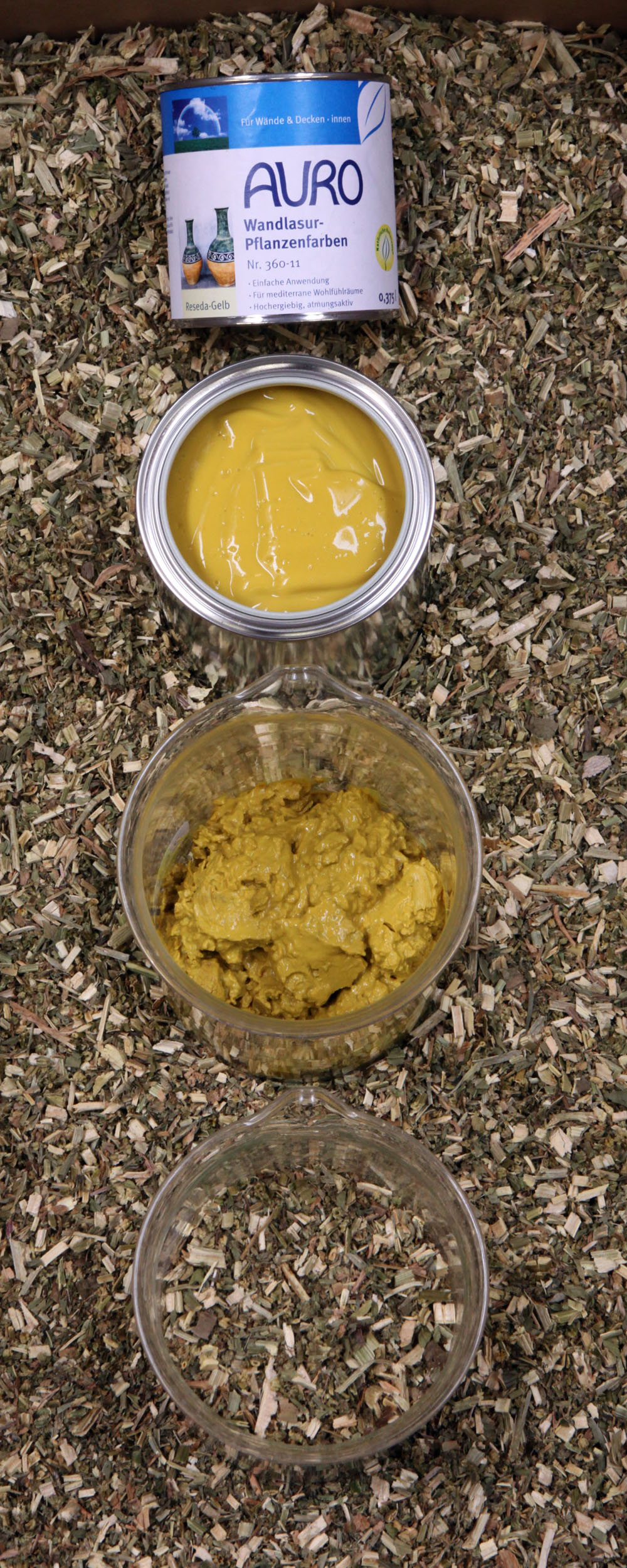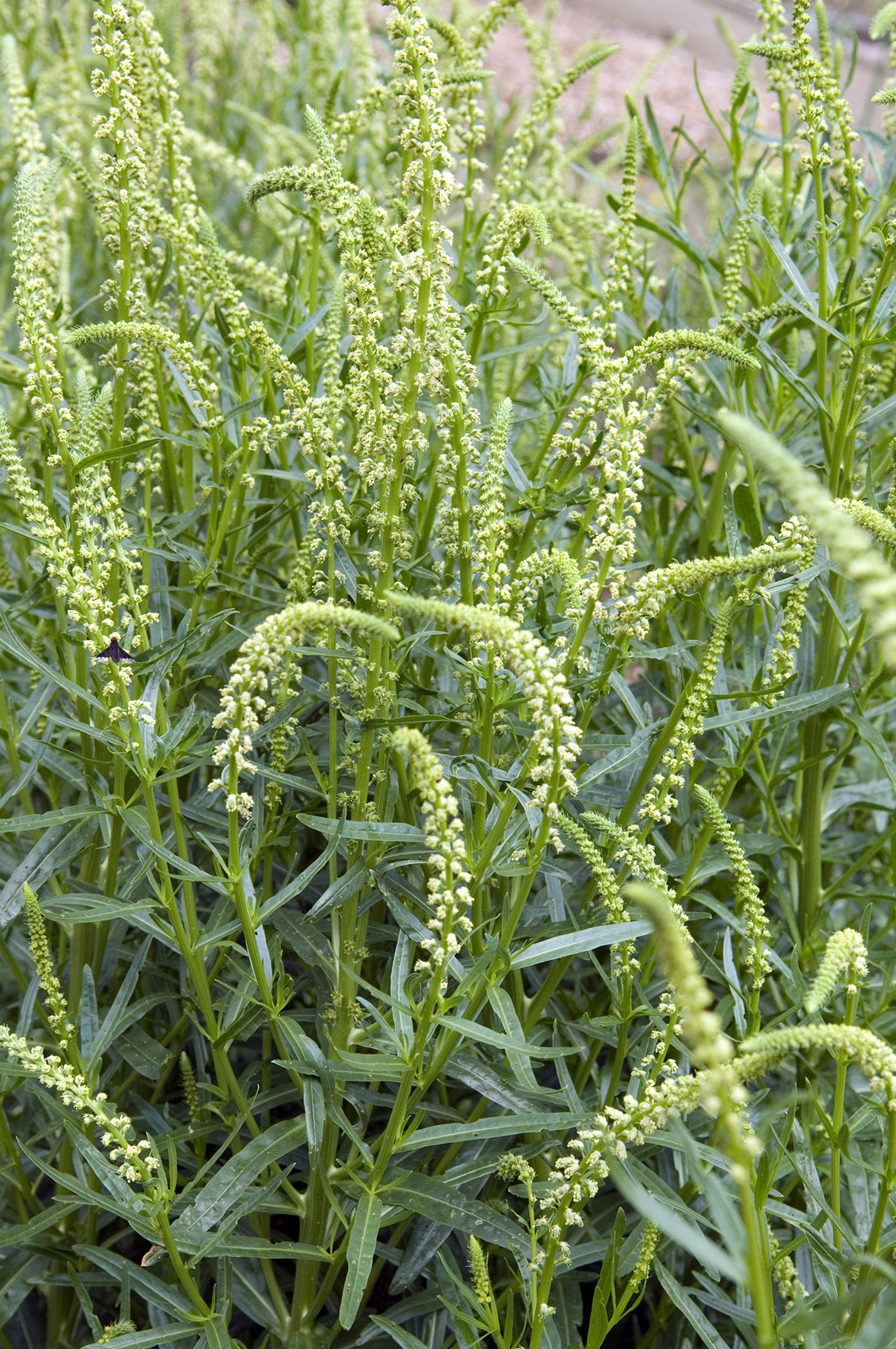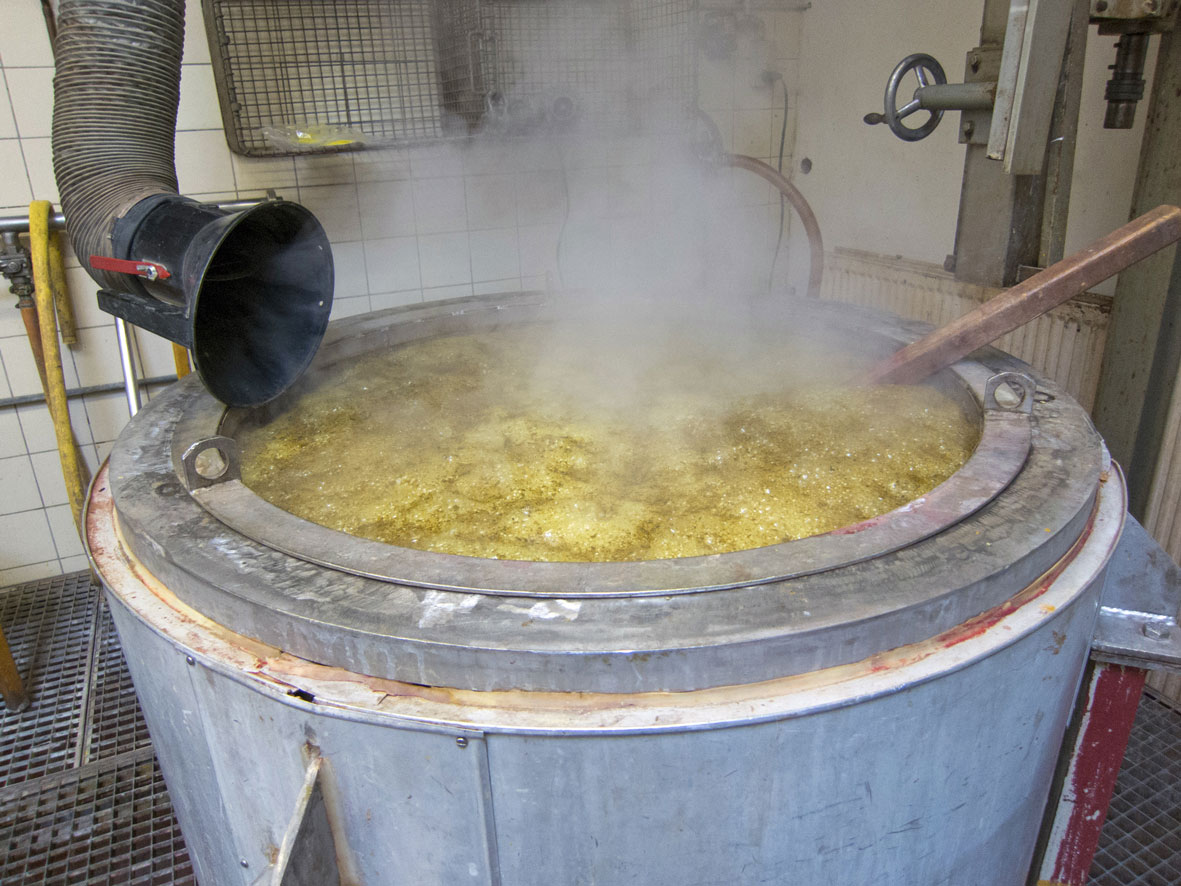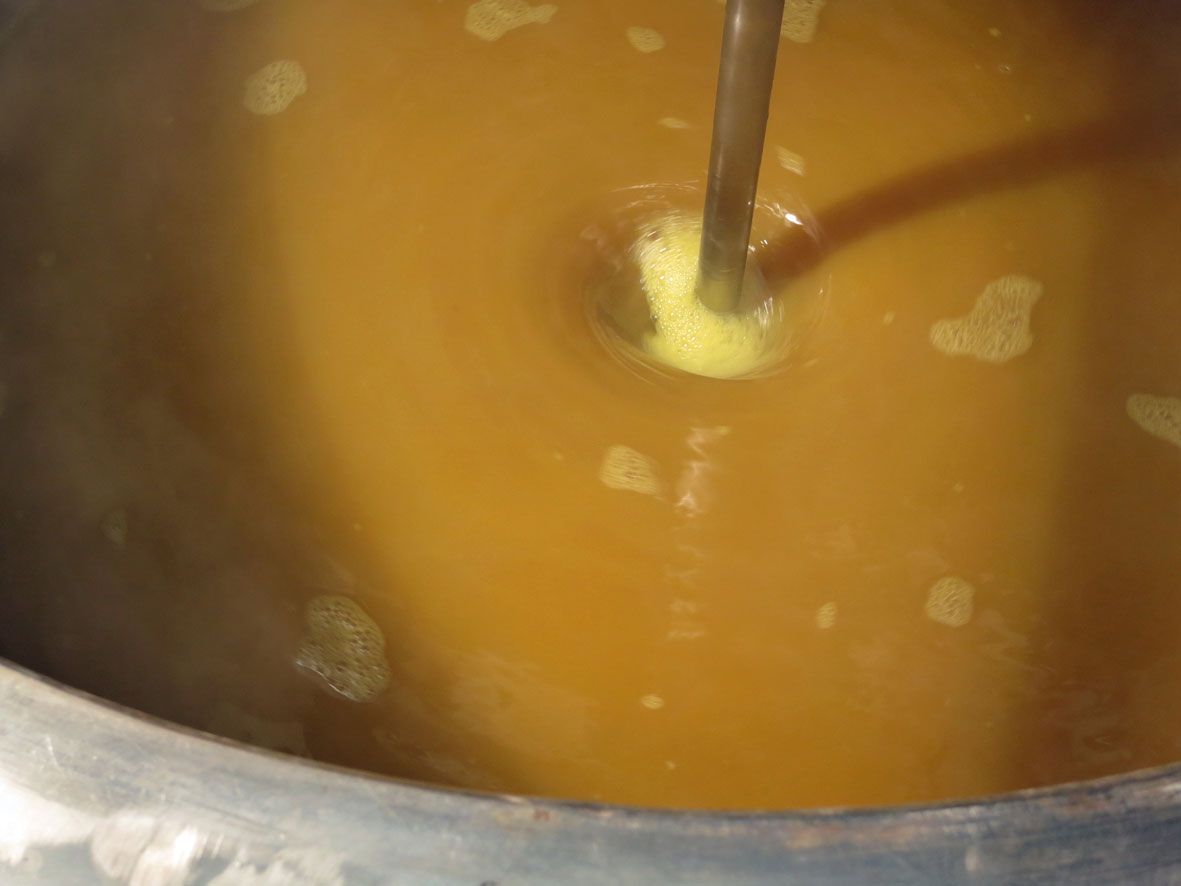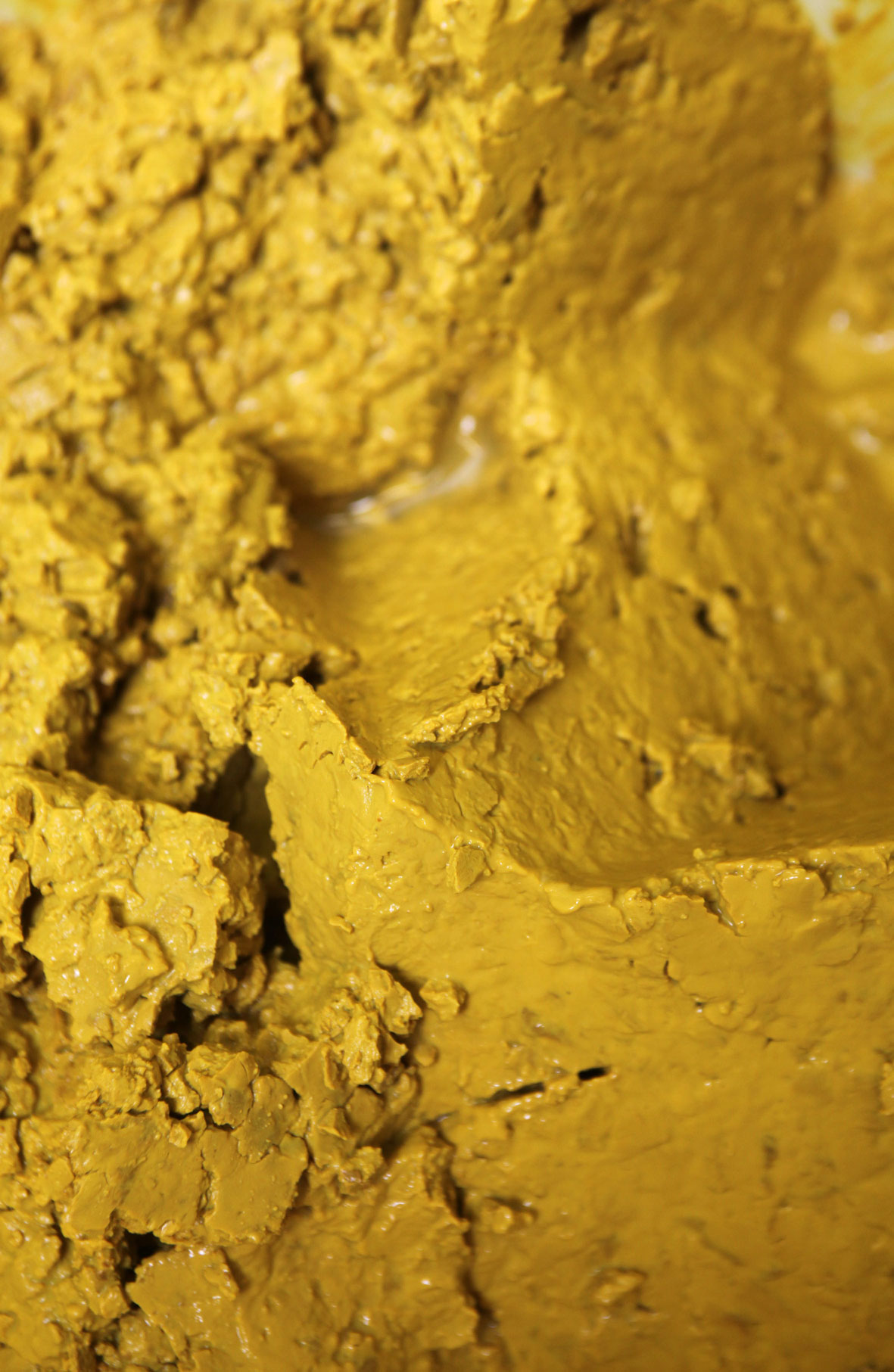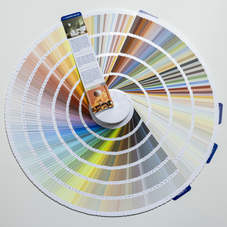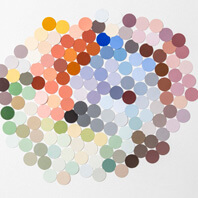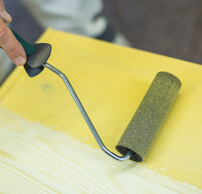Raw material stories
Allmost all plants contain colouring substances in this form or another; normally even in several plant parts, e.g. in roots, stalks, leaves, flowers or fruits. Mostly, the colouring substances will have the highest concentration in one of the parts, but they are strongly bound and not easily available.
The main difficulty is to separate the colorant and to bind it again afterwards. The extractopn of the coloring substances is different for all plant colors.
Reseda luteola is said to be one of the oldest dyeing plants, also known as "dyers' rocket" or "weld", mainly cultvated in the middle and south Europe. Reseda can be found growing wildly on the road sides.
The plant can grow up to one meter and remains in the soil for about 14 months. It will be harvested after the stalks and the leaves have lost their green colour almost completely.
The plant color as wall glaze

Glazes are transparent coatings. The special glazing effect of the plant glazes will be reached by applying them in several layers, mixed in varying proportions with water and binders.
In this way, plant colors can provide for an extraordinary transpatent, multi-dimenstional coloring effect that cannot be reached by means of any other inorganic or organic pigments.

